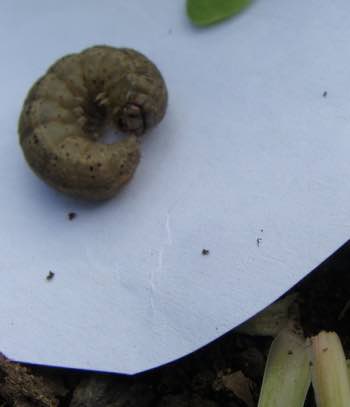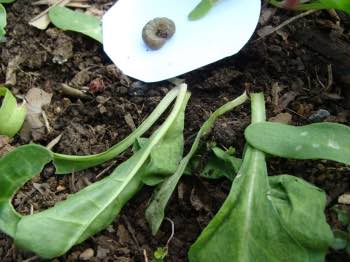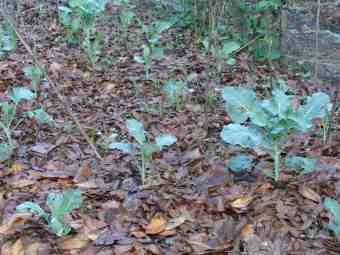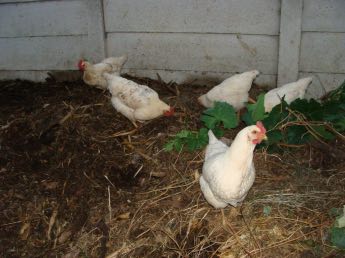- Homepage
- Worm farms
- Definition of Cutworm
Definition of cutworm
Definition of cutworm may help you to control this nasty pest; they can annihilate your young plants and some larger ones too.
Just as a matter of interest, I build these pages either because it is a subject that I think I am knowledgeable about, like neck pain and headaches; or it is something I am not up on and I go and do some homework and find out. That is how I came to build a solar farm on our roof, providing us with free electricity for example.

This page was last updated by Bernard Preston on 14th July, 2023.
Underlying it all are two important philosophical considerations. One is how to be strong and vibrant as far as possible without the use of medication and the other is to ensure that our grandchildren have a habitable world to live in; otherwise they will curse us in our graves and rightly so. These are the two features that make up a cyan zone.
That means a passion for nutritious food and exercise and a determination to participate in the race to end waste; and in particular to reduce and recycle plastic.
Cutworms too love strong plants grown without poisons; they want to snip them off as seedlings and we want them to grow to vibrant maturity so we can enjoy them for dinner. Insects are our chief competitors on the planet. Some, like honeybees are our best friends.
 Spinach seedlings cut by the worm
Spinach seedlings cut by the wormDefinition of cutworm
This definition of cutworm is for the backyard permaculturist who does not want to use toxic sprays.
Cutworms fit into a category about which I knew very little, except that when I went fishing around a seedling that had been knocked over in the night, there was almost always a little green or brown caterpillar just beneath the surface of the ground.
Ours are about an inch long; and they roll up into a C-shape when exposed.
I did study biology at school and a whole year of zoology at university before going on to soak myself in anatomy and physiology; so I do have some background on the subject.
These fat little larvae, unlike those of honeybees which are fed by the adults, have to find their own dinner; so they creep around on the surface of the soil at night until they find a succulent and juicy seedling. That could be a weed or one of your kale plants.
Then during the day they burrow under the soil again; otherwise the robins would soon have them for breakfast.
They are the larvae of night-flying moths of the family known as Noctuidae.
They are indeed nocturnal. There are several different species so some cutworms may be a dull grey or green, whilst others are black and variegated; but generally around an inch long.
The moths themselves of course we will never see as they flit about at night laying their eggs either in the soil or under the leaves of small plants. They too are about an inch long; and because they belong to different species come in a whole variety of shades of black and brown with splotchy and striped wings of many colours.
The moths themselves do not seem to do much damage; it is their offspring that cut off our tender young seedlings.
The material expressed on this page is gleaned from the nutritional and environmental literature; it is clearly referenced. A plain distinction is made between the author's opinion and that which is scientifically proven. When in doubt consult your health professional.
To suggest a correction or clarification, write to Dr Bernard Preston here. Contact.
In our mild climate they live in the soil year-round; it is now two weeks to the winter solstice and the boss and I have just planted out many rows of winter vegetables like cabbages, cauliflower and kale. Every morning we find the cutworms have been busy and a few seedlings have been knocked over.
How to control cutworms is a subject much debated but we are agreed on one thing; in the permaculture garden there is no place for insecticides. Apart from poisoning us, these ecocides would kill the robins and thrushes that are their natural enemies. We would be shooting ourselves in the foot.
Helen is all for stopping the cutworms by poking around the dead seedling and feeding the offender to the chooks. I'm all for dealing with them before they get there; more about that later.
In the colder climates they overwinter mainly as eggs in patches of weeds and grass. The larvae hatch out in the warmer weather and soon start feeding greedily on the tender leaves, stems and roots of young weeds; and then our plants when we set them out.
Backyard permaculture
Backyard permaculture is basically the subject of working with nature rather than against it. For example, there is no point in risking poisoning the very birds that will help you control the definition of cutworm.
Helen likes to use her trowel to dig around the plants, giving a shout of joy when she finds a cutworm. I am less enthusiastic about that, concentrating on protecting the seedlings; too late, cries he.
Newsletter
Our newsletter is entitled "create a cyan zone" at your home, preserving both yourself and Mother Earth for future generations; and the family too, of course. We promise not to spam you with daily emails promoting various products. You may get an occasional nudge to buy one of my books.
Here are the back issues.
- Lifestyle and ideal body weight
- What are ultra-processed foods?
- Investing in long-term health
- Diseases from plastic exposure
- Intensive lifestyle management for obesity has limited value
- A world largely devoid of Parkinson's Disease
- The impact of friendly bacteria in the tum on the prevention of cancer
- There's a hole in the bucket
- Everyone is talking about weight loss drugs
- Pull the sweet tooth
- If you suffer from heartburn plant a susu
- Refined maize meal and stunting
- Should agriculture and industry get priority for water and electricity?
- Nature is calling
- Mill your own flour
- Bake your own sourdough bread
- Microplastics from our water
- Alternative types of water storage
- Wear your clothes out
- Comfort foods
- Create a bee-friendly environment
- Go to bed slightly hungry
- Keep bees
- Blue zone folk are religious
- Reduce plastic waste
- Family is important
- What can go in compost?
- Grow broad beans for longevity
- Harvest and store sunshine
- Blue zone exercise
- Harvest and store your rainwater
- Create a cyan zone at your home
How to stop cutworms is best done by removing all the dead weeds and plant remains in late autumn where the moths will lay their eggs.
Keeping grass borders at least a metre back from where you will plant your seedlings helps too; they will overwinter in your lawns as well.
That is a problem for us as many of our vegetables grow best in the winter when it is very dry; so we mulch the garden with autumn leaves to keep the moisture in. That is the perfect place for the moths to lay their eggs. It also keeps the weeds at bay, so that helps too in our battle with cutworms.
Lightly hoeing the ground both in autumn and spring is advocated but we are trying to disturb the earth as little as possible, just laying new compost on the surface and planting directly; that is a dilemma if you are toying with "no-till."
In the spring all the old leaves are raked up into the compost-heaps, taking most of the eggs with them.
But for me the best way of dealing with cutworms is the introduction of chickens. That is a whole new ballgame in your backyard permaculture; for me an important next step but not without difficulties.
If they have been allowed to scratch through the compost and mulch before planting, there hopefully will not be much cutworm activity.

Best chicken feed
Best chicken feed is the very definition of cutworm. When you go working in the garden you will soon notice that the hens are very quick; and their eyes far sharper than ours.
Nothing escapes those beady little eyes; not a snail or slug, nor a cutworm.
When coping with the definition of cutworm you have to use all your ingenuity. I have yet to confirm it yet as we have only had the hens for six months, and the birds have been banished to half the garden where there are no seedlings; they do even more damage than the larvae.
But they seem to practise a scorched earth policy; they have scratched and searched every square centimetre of ground, removing all the weeds and I am certain all the cutworm eggs and larvae. And another nasty too, the Mexican bean-beetle larvae that have also got the better of us.
In spring we will swap halves of the garden, planting the new seedlings in the scorched but well fertilized earth; I am optimistic there will be minimal cutworm and bean-beetle damage.
First indications are very encouraging; we are going to get our first bean crop in four years by the looks of things.
The birds will then go into the remains of the winter garden, picking at all the young cutworms and other pests which are particularly active in the Spring. Then we will put them in the chicken-run until the corn is well up; then hens do not bother them.
I have yet to decide whether cutworms flourish in the compost heap or not.
I have yet to find any surviving the worm farm. Notice the synergy of green living; backyard permaculture means the very best chicken feed for your hens. The definition of cutworm has become an irritation rather than a major problem. Bernard Preston and his family enjoy the most delicious eggs with golden yolks rich in choline; that's the B vitamin that the average Western person gets only half of the recommended daily allowance. It is one of the reasons why we have so many birth defects and miscarriages.
Choline food sources are important to every one of us, and especially to young women of childbearing age.

Why all this bother?
Why all this bother? Just out of sight we are fouling our beautiful world; only a few more generations of human beings and our planet is finished. We are already feeling the effects with melting ice packs and oceans that will soon have more plastic in them than fish; that is not an exaggeration.
Will you join me and try to wean off plastic; recycle it whenever you can, and avoid using it where possible?
One third of the food produced on the planet never actually is eaten; the race to end waste is on. The other two-thirds is largely fouled with pesticides; we pay for our sins with enormous suffering from neoplasms and autoimmune diseases.
So growing our own food is part of the solution, hence grasping the definition of cutworm has become important. From afar you are probably asking why all this bother but, at the garden-face, I can promise you, growing, reaping and enjoying your own vegetables is one of the most satisfying things I have ever done. It is almost as good as watching patients regain their health with manipulation instead of anti-inflammatory drugs that do such harm to the intestines.
Just the ruddy definition cutworms and bean beetle larvae that was such a bother. Now luckily they are a small fraction of the former problem.
When browsing use right click and "Open Link in New Tab" or you may get a bad gateway signal.
Bernard Preston
Bernard Preston is a semi-retired DC with a passion for vibrant living and backyard permaculture. Finding out about the definition of cutworm is today's puzzling question.
Luckily it turns out that cutworms make up the best chicken feed; let the hens loose before planting your seedlings.
What is a cyan zone you might have pondered at few minutes ago.
Did you find this page interesting? How about forwarding it to a friendly book or food junkie? Better still, a social media tick would help.
- Homepage
- Worm farms
- Definition of Cutworm
Address:
56 Groenekloof Rd,
Hilton, KZN
South Africa
Website:
https://www.bernard-preston.com